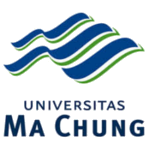TRANSLATION TECHNIQUES ANALYSIS: THE ACCURACY OF INDONESIAN SUBTITLES IN THE GENSHIN IMPACT GAME《原神》
Abstract
The exchange of information between two languages, from the source language (SL) to the target language (TL), requires a process known as translation. The translated text is referred to as the translation product, and during its creation, translation techniques are needed to produce an accurate meaning in the target language. Translation occurs across various media, one of which is in video games. Accurate translation provides clear and directed instructions to players for completing game missions. Therefore, this research aims to examine how translation techniques from Mandarin to Indonesian affect the meaning of translations in several mission dialogue clips from the game Genshin Impact. Descriptive qualitative research method is used to analyze this research. The translation product, consisting of mission dialogue sentences from Genshin Impact, serves as the data analyzed. The data are examined with reference to Molina and Albir’s translation technique theory. The results indicate that the choice of translation techniques can influence the meaning of the resulting translation product. In fact, in the Indonesian subtitles of Genshin Impact, some translation techniques used were found to be less suitable, leading to inaccurate translation meanings.
References
Firmansyah, Y. A. (2020). Apa itu genshin impact? Https://esportsnesia.com/penting/apa-itu- genshin-impact/ diakses pada 30 mei 2023
Hapsari, E. K., Setiawati, N., & Mutiara, B. (2020). Strategi penerjemahan istilah budaya sosial dan organisasi sosial: Penelitian analisis isi pada penerjemahan novel Bocchan karya Natsume Soseki ke dalam bahasa Indonesia. Kagami: Jurnal Pendidikan Bahasa Jepang. 11(1)
Khair, M. (2022). How RPG (Role Play Games) impact players’ English ability. La Parole: Journal of Language Teaching and Pedagogy, 5(2), 51
Moloeng, L. J. (2005). Metodologi penelitian kualitatif. Bandung: pt remaja rosdakarya.
Mason, j. (2002). Qualitative researching. London: sage publication
Molina & albir, h. (2002). Translation techniques revisited: a dynamic and functuonalist approach. Meta, vol. Xlvii, no. 4.
Rahmah, Y. (2018). Metode dan teknik penerjemahan karya sastra. Kiryoku, 2(3), 127. http://ejournal.undip.ac.id/index.php/kiryoku.
Rankin, R. L. (2017). The Comparative Method. Berkeley: University of California https://doi.org/10.1002/9781405166201.ch1
Saputro, Y. E. (2021). Hakikat penerjemahan. Jurnal Pendidikan dan Pemikiran, 16(2). http://jurnal-stainurulfalahairmolek.ac.id/index.php
Setiawan. A. P. (2022). Perbandingan dialog bahasa mandarin dengan teks terjemahan bahasa Indonesia karakter gim genshin impact. Century: journal of Chinese language, literature, and culture 10(2), 62-73. 10.9744/century.10.2.62-73
Sudaryanto. (2015). Metode dan aneka teknik analisis bahasa. Yogyakarta: sanata dharma Press
Surgawi, t., et, al. (2018). Analisis kualitas terjemahan dari bahasa inggris ke dalam bahasa indonesia. Jurnal penelitian teknologi pendidikan 16(2) https://doi.org/10.20961/teknodika.v16i2.34777
Utami, r. (2019). Teknik penerjemahan istilah budaya tiongkok ke istilah bahasa indonesia oleh mahasiswa d3 bahasa mandarin univeersitas jenderal soedirman. Semarang: Undip Repository http://eprints.undip.ac.id/81120/
Volf, P. (2020). Translation techniques as a method for describing the results and classifying the types of translation solutions. Applied Translation, 14(2). https://doi.org/10.51708/apptrans.v14n2.1171

This work is licensed under a Creative Commons Attribution-ShareAlike 4.0 International License.
Open Access Policy
This is an open access journal which means that all content is freely available without charge to the users or their institution. Users are allowed to read, download, copy, distribute, print, search, or link to the full texts of the articles, or use them for any other lawful purpose, without asking prior permission from the publisher or the author. This is in accordance with the BOAI definition of open access.
![]() This work is licensed under a Creative Commons Attribution-ShareAlike 4.0 International License.
This work is licensed under a Creative Commons Attribution-ShareAlike 4.0 International License.

















